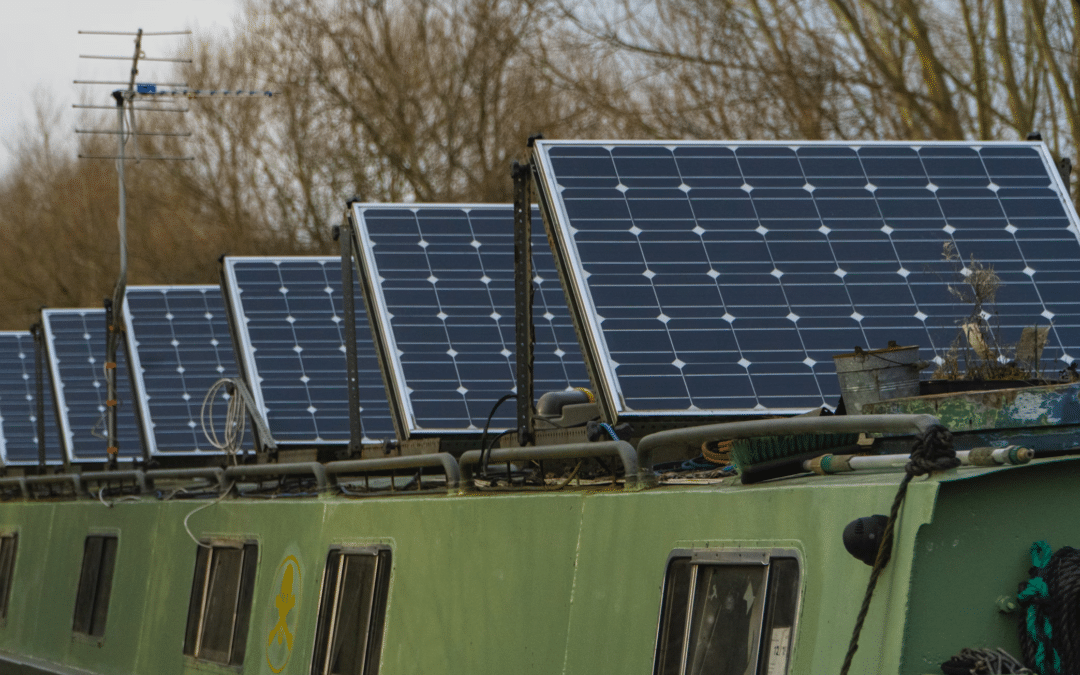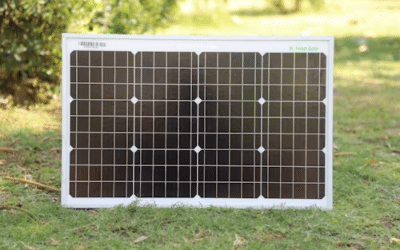Solar roof vents are a type of ventilation system that uses the sun’s energy to power a fan that draws hot air out of an attic or other enclosed space. These vents are becoming increasingly popular among homeowners who are looking for ways to increase energy efficiency and reduce their carbon footprint. By using solar power instead of electricity, solar roof vents can help to save money on energy bills while also reducing greenhouse gas emissions.
One of the main benefits of solar roof vents is that they can help to improve the overall energy efficiency of a home. By removing hot air from the attic, these vents can help to reduce the amount of heat that is transferred into the living space below. This can help to keep the home cooler in the summer and reduce the need for air conditioning. Additionally, by reducing the amount of heat in the attic, solar roof vents can help to extend the life of roofing materials and prevent damage caused by moisture buildup.
Overall, solar roof vents are an effective and eco-friendly way to improve ventilation and energy efficiency in a home. By harnessing the power of the sun, these vents can help to reduce energy costs and greenhouse gas emissions while also improving indoor comfort and extending the life of roofing materials.
Understanding Solar Roof Vents
Solar roof vents are an innovative way to ventilate your attic while also reducing your energy bills and carbon footprint. They work by using solar power to generate electricity, which powers a fan that draws hot air out of your attic and replaces it with cooler air from outside. This section will explore how solar roof vents work, the benefits of solar-powered ventilation, and how they compare to traditional attic vents.
How Solar Roof Vents Work
Solar roof vents work by harnessing the power of the sun to generate electricity. They are made up of three main components: a solar panel, a fan, and a vent. The solar panel is typically mounted on the roof and is responsible for converting sunlight into electricity. The fan is located inside the attic and is powered by the solar panel. It draws hot air out of the attic and replaces it with cooler air from outside. The vent is located on the roof and allows the hot air to escape.
Benefits of Solar-Powered Ventilation
There are several benefits to using solar-powered ventilation in your home. Firstly, it can significantly reduce the heat in your attic, which can lower cooling costs and prevent damage to your roof shingles. Secondly, solar roof vents are energy-efficient and environmentally friendly, as they use solar power to operate. This means that they don’t add to your energy bills or carbon footprint. Finally, solar roof vents have fewer moving parts than electric attic fans, resulting in lower maintenance requirements.
Comparing Solar to Traditional Attic Vents
When compared to traditional attic vents, solar roof vents have several advantages. Firstly, they are more energy-efficient, as they use solar power to operate. This means that they don’t add to your energy bills or carbon footprint. Secondly, solar roof vents are easier to install than traditional vents, as they don’t require any wiring or electrical work. Finally, solar roof vents are more reliable than traditional vents, as they have fewer moving parts and are less likely to break down or malfunction.
In conclusion, solar roof vents are a great way to ventilate your attic while also reducing your energy bills and carbon footprint. They work by using solar power to generate electricity, which powers a fan that draws hot air out of your attic and replaces it with cooler air from outside. Solar roof vents have several benefits over traditional attic vents, including being more energy-efficient, easier to install, and more reliable.
Installation and Maintenance
Solar roof vents are relatively easy to install and maintain. However, it is important to determine the right size and placement before installation to ensure optimal performance. In this section, we will discuss the different aspects of installation and maintenance.
Professional Installation vs. DIY
While it is possible to install solar roof vents on your own, it is generally recommended to hire a professional electrician for the job. Professional installation ensures safety, proper installation, and adherence to building codes. Moreover, professionals have the expertise, tools, and experience to handle the task efficiently and effectively.
However, if you are a skilled DIY enthusiast and have experience with electrical work, you may be able to install a solar roof vent on your own. Just make sure to follow the manufacturer’s instructions carefully and take all necessary safety precautions.
Maintenance Requirements
Solar roof vents have fewer moving parts than electric attic fans, resulting in lower maintenance requirements. With no motors or electrical components to worry about, you can enjoy hassle-free ventilation without the need for frequent inspections or repairs. However, occasional maintenance is still required to ensure optimal performance.
It is recommended to clean the solar panel and fan blades at least once a year to remove any dirt or debris that may have accumulated. Moreover, you should check the vent’s operation regularly to ensure that it is working properly.
Determining the Right Size and Placement
Determining the right size and placement of a solar roof vent is crucial for optimal performance. The size of the vent should be based on the size of your attic and the amount of ventilation required. A general rule of thumb is to have one square foot of ventilation for every 150 square feet of attic space.
Moreover, the placement of the vent should be in a location that receives maximum sunlight. This will ensure that the solar panel can generate enough energy to power the fan. Ideally, the vent should be installed on the roof’s south-facing side, where it can receive the most sunlight.
In conclusion, installing and maintaining solar roof vents is relatively easy and straightforward. By following the manufacturer’s instructions and taking all necessary safety precautions, you can enjoy hassle-free ventilation and lower energy costs.
Performance and Efficiency
Solar roof vents are an efficient and cost-effective way to reduce energy costs and increase the lifespan of a roof. These vents use solar power to extract hot air from the attic and replace it with cooler air from outside, which can help to reduce the temperature of the entire house.
Maximizing Energy Savings
By reducing the temperature of the attic, solar roof vents can help to reduce the amount of energy needed to cool the house. This can lead to significant cost savings on energy bills, especially during the summer months. According to SolVoltaics, solar roof vents can reduce attic temperatures by up to 50 degrees, which can translate into savings of up to 30% on cooling costs.
Impact on Air Conditioning and Cooling Costs
Solar roof vents can also help to reduce the load on air conditioning systems, which can extend their lifespan and reduce maintenance costs. By reducing the temperature of the attic, solar roof vents can help to reduce the amount of time that air conditioning systems need to run, which can lead to lower cooling costs and less wear and tear on the system.
Solar Vent Lifespan and Durability
Solar roof vents are designed to be durable and long-lasting. Most models come with a warranty of up to 25 years, and many are made from high-quality materials that can withstand harsh weather conditions. According to Upgraded Home, solar roof vents can last up to 20 years or more, which can provide a significant return on investment over the lifespan of the roof.
In conclusion, solar roof vents are an efficient and cost-effective way to reduce energy costs and increase the lifespan of a roof. By maximizing energy savings, reducing the load on air conditioning systems, and providing long-lasting durability, solar roof vents can provide a significant return on investment for homeowners.
Cost Analysis
Solar roof vents are an investment that can save homeowners money on their energy bills. However, the initial cost of installation can be high, and homeowners should consider the long-term costs and benefits before making a decision.
Evaluating Initial and Long-Term Costs
The cost of a solar roof vent can vary depending on the size of the roof, the number of vents needed, and the complexity of the installation process. The initial cost of installation can be high, but the long-term savings on energy bills can make it a cost-effective investment.
Homeowners should also consider the long-term costs of maintenance and repair. Solar roof vents have few moving parts and require little maintenance, but if a repair is needed, it can be costly. Homeowners should factor in the cost of repair when evaluating the long-term costs of a solar roof vent.
Understanding the Return on Investment
The return on investment (ROI) for a solar roof vent is dependent on the initial cost of installation, the energy consumption of the home, and the cost of electricity in the area. Homeowners should calculate the ROI to determine if a solar roof vent is a cost-effective investment.
A solar roof vent can reduce the energy consumption of a home, which can lead to savings on utility bills. The amount of savings depends on the energy consumption of the home and the cost of electricity in the area. Homeowners should calculate the potential savings on their energy bills to determine the ROI of a solar roof vent.
Federal and State Incentives
Homeowners may be eligible for federal and state incentives for installing a solar roof vent. The federal government offers a tax credit for homeowners who install solar panels or solar roof vents. Some states also offer incentives, such as rebates or tax credits, for homeowners who install solar roof vents.
Homeowners should research the incentives available in their area to determine if they can offset the high upfront cost of installation. The incentives can make a solar roof vent a more cost-effective investment for homeowners.
Environmental Impact and Sustainability
Solar roof vents are an eco-friendly and sustainable solution for homes. They have a positive impact on the environment by reducing the carbon footprint, promoting renewable energy use, and contributing to eco-friendly housing.
Reducing the Carbon Footprint with Solar Vents
Solar roof vents use clean solar power to operate, which reduces the reliance on electricity generated from fossil fuels. This reduces the carbon footprint and lowers greenhouse gas emissions. According to a study published in ScienceDirect, solar roof vents have a significant impact on reducing the carbon footprint of homes [1].
Promoting Renewable Energy Use in Homes
Solar roof vents promote the use of renewable energy in homes. They harness the power of the sun, which is a clean and renewable resource. This reduces the dependence on non-renewable sources of energy, such as coal and oil. In addition, solar roof vents have fewer moving parts than electric attic fans, resulting in lower maintenance requirements. With no motors or electrical components to worry about, homeowners can enjoy hassle-free ventilation without the need for frequent inspections or repairs.
Contribution to Eco-Friendly Housing
Solar roof vents contribute to eco-friendly housing by reducing the energy consumption of homes. This leads to lower energy bills and a smaller carbon footprint. In addition, solar roof vents can be integrated with green roofs, which provide additional benefits for renewable electricity production as compared to traditional roofs [2]. This makes solar roof vents a sustainable and eco-friendly solution for homeowners who want to reduce their impact on the environment.
Overall, solar roof vents are an excellent solution for homeowners who want to reduce their carbon footprint and promote sustainable living. They are a cost-effective and eco-friendly way to ventilate homes and contribute to a greener future.
[1] https://www.sciencedirect.com/science/article/pii/S0038092X20302280
[2] https://www.sciencedirect.com/science/article/pii/S1876610219319547
Conclusion
In conclusion, solar roof vents can be a cost-effective and environmentally friendly solution to remove heat from a building’s attic space during exceptionally hot days. They can help to cool down living spaces and prevent damage to attics from weather-related damage.
When choosing the right solar roof vent, it is important to consider factors such as the size of the fan, the amount of ventilation needed, and the location of the vent. It is also important to ensure that the vent is compatible with the type of roof on the building.
While solar-powered vents can provide a significant advantage for off-gridders, homesteaders, and RVers, especially those who live in warm and humid regions, it is important to note that they may not be worth it for everyone. Homeowners should consider their individual needs and circumstances before investing in a solar roof vent.
Overall, solar roof vents can be a great investment for those looking to reduce their energy bills and promote a more sustainable lifestyle. With the right research and consideration, homeowners can choose the right solar roof vent for their needs and enjoy the benefits of a cooler, more comfortable living space.




